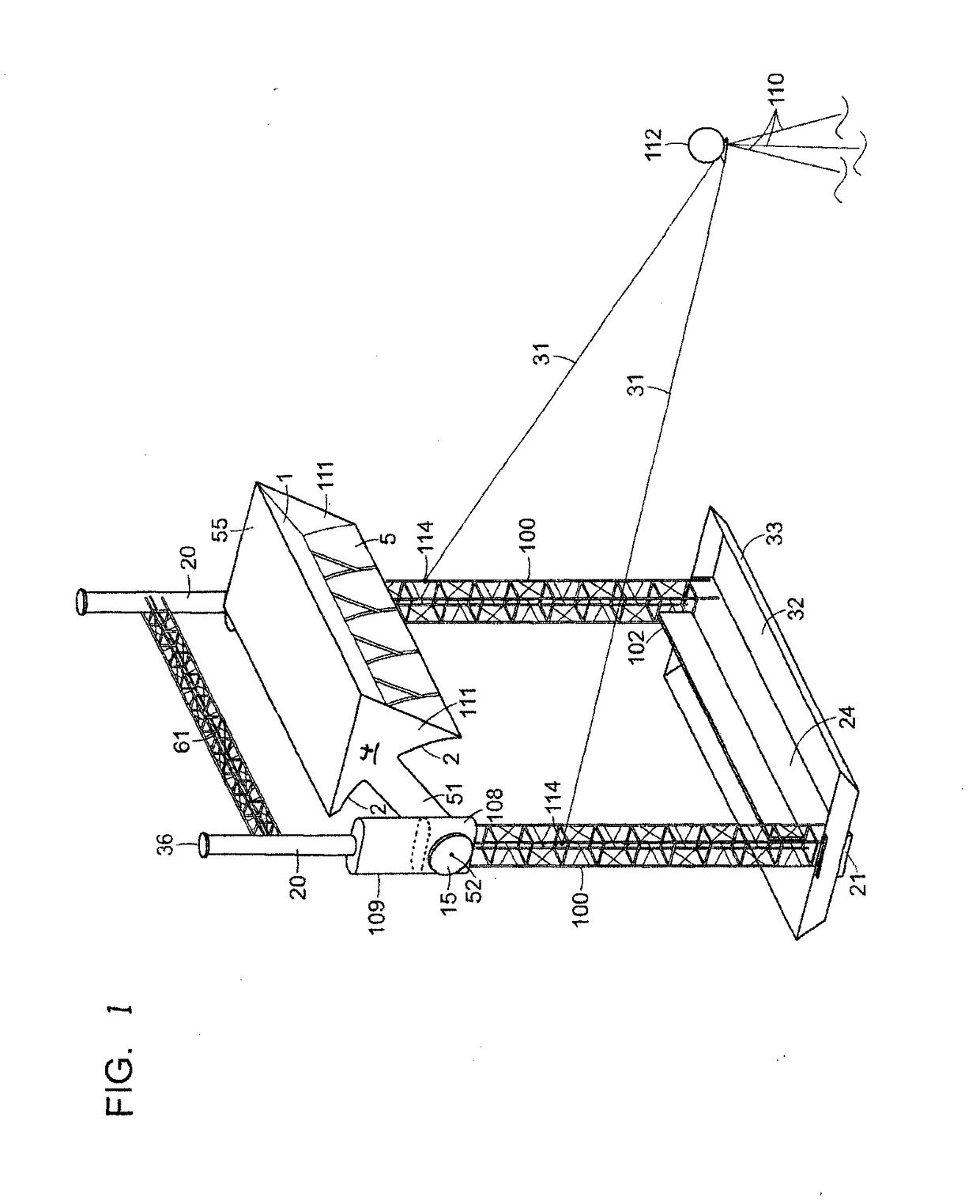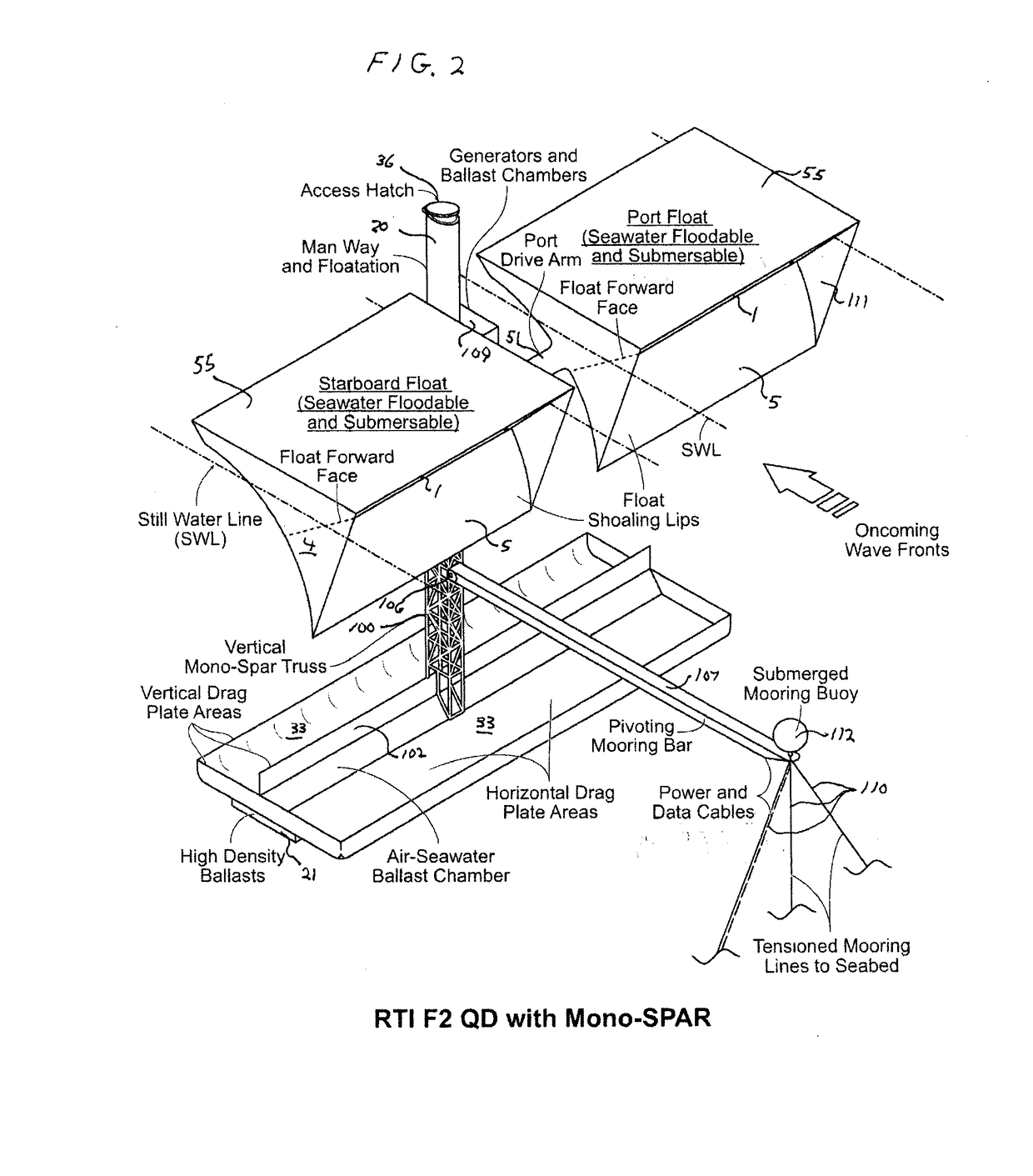High capture efficiency wave energy converter withimproved heave, surge and pitch stability
a wave energy converter and high-efficiency technology, applied in buoyancy control, mechanical equipment, machines/engines, etc., can solve the problems of high capital cost (capex/mw), lack of convergence, and inability to capture significant surge wave energy, etc., and achieve the effect of small volum
- Summary
- Abstract
- Description
- Claims
- Application Information
AI Technical Summary
Benefits of technology
Problems solved by technology
Method used
Image
Examples
Embodiment Construction
[0052]Referring to FIG. 1, a two-body WEC comprising a first body elongated wave front parallel surface float 4 (having deck 55, front face 1, rear wall 2 with lower extension 5, and side shields 111) is shown attached via swing or drive arms 51, pivoting about point 52, to a second semi-submersed twin vertical spar frame or body (having 20 upper frame column with top access hatch 36, mid-frame 109w PTO 5 housing, 100 lower frame, and 61 frame cross beam) pivotably attached 114 to a submersed buoyant mooring buoy 112 by twin mooring cables 31 which mooring buoy is affixed to the seabed by three tensioned mooring cables 110. This embodiment achieves several of the objectives of the subject disclosure including; 1. A second body (twin vertical spar semi-submersible frame) partially stabilized against unwanted heave and pitch motion by both horizontal 32 and vertical 33 and 102 drag plates, seawater ballast in ballast tank 108, and solid ballast 21, 2. Self-orientation of the Float 4 p...
PUM
 Login to View More
Login to View More Abstract
Description
Claims
Application Information
 Login to View More
Login to View More - R&D
- Intellectual Property
- Life Sciences
- Materials
- Tech Scout
- Unparalleled Data Quality
- Higher Quality Content
- 60% Fewer Hallucinations
Browse by: Latest US Patents, China's latest patents, Technical Efficacy Thesaurus, Application Domain, Technology Topic, Popular Technical Reports.
© 2025 PatSnap. All rights reserved.Legal|Privacy policy|Modern Slavery Act Transparency Statement|Sitemap|About US| Contact US: help@patsnap.com



